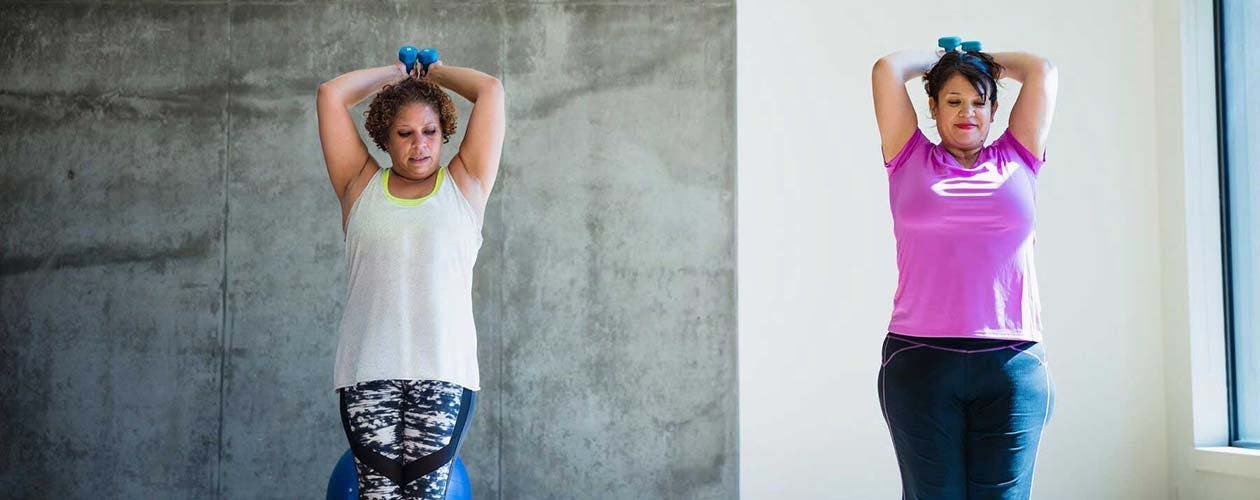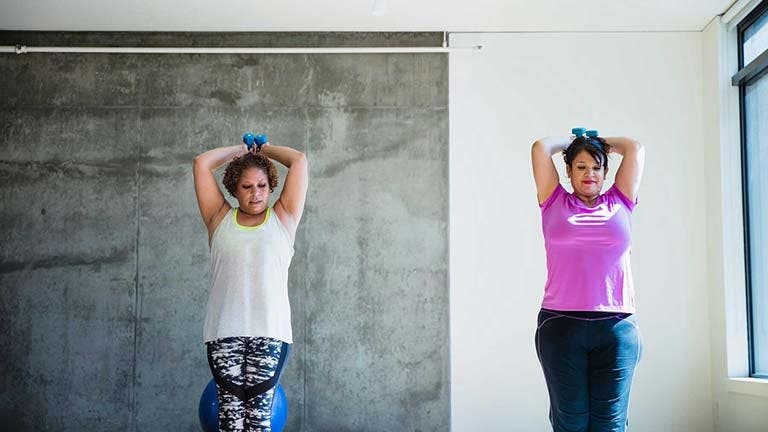Keeping fit in your 50s


There are so many reasons to celebrate getting older. You may find you have more time for yourself, particularly if your children have grown up and flown the nest. That means more time to relax, get stuck into new projects, cook delicious meals - basically spending more time doing what you want!
Studies also show that we get happier with age. For example, a recent study found a “happiness curve” where people are most unhappy in their lives around the age of 47, but things typically get better from there. Dartmouth College professor David Blanchflower used 15 different measures of unhappiness in the study, including stress, loneliness, pain, despair and quality of sleep, and found evidence of a wellbeing U-shape in age across 132 countries.
Other studies have shown that we become more trusting as we get older, find it easier to let go of negativity, are more financially secure and are more content with everyday things rather than seeking adventure and spontaneity.
While there’s plenty to celebrate, it’s worth remembering that some pretty significant changes take place in your body as you approach and during your 50s, which may require simple lifestyle changes to stay fit and at a healthy weight.
What changes in your 50s?
To stay healthy and strong, it’s important to be aware of what’s happening in your body.
As you age, your metabolic rate - the rate at which your body uses energy - starts to slow down. This may mean you require fewer calories each day to maintain your weight.
Exercise physiologist Andrew Schwartz adds that sarcopenia, or age-related loss of muscle mass, can also occur at this stage of life.
“The loss is up to one per cent per year and can have many repercussions, including loss of strength, weight gain and a higher risk of falls and breaking bones,” he says.
General Practitioner Dr Andrew Kwong says you may also notice that your body shape starts to change, especially if you’re menopausal or post-menopausal.
“Body shape changes are influenced by sex hormone levels in the body,” he says. The drop in oestrogen during menopause can cause body fat to be redistributed to your waistline, giving the body more of an ‘apple’ shape.
Fat around your midsection is more dangerous than fat stored in your hips and thighs, for example, and can increase your risk of heart attack, stroke, diabetes, and more.
How can exercise help?
To combat age-related muscle loss, strength training (also known as resistance training) is key.
Lifting weights or doing body weight exercises like press-ups will help build muscle to keep you strong and fit, and combat the effects of sarcopenia.
An added bonus is that muscle burns more calories than fat, so building muscle through exercise can also help you burn more energy throughout the day, helping with weight maintenance and loss.
“It’s great that retirees are going for nice walks in the country or along the beach, but I’d prefer to see them doing strength training,” says Schwartz.
“While people can be relatively fit by walking often, they need the strength to take groceries upstairs, and the mobility to get up a ladder to change a light bulb,” he adds.
Struggling to do these day-to-day activities could foster a loss of independence, and affect self-esteem.
Schwartz concludes: “People might say, ‘I’m too old to go to the gym’, but you’re not! It might require effort, but the benefits can be enormous.”
Check out WW member Flora’s story: she used to hate exercise, and is now regularly taking part in (and loving!) our live workouts in the Healthy Body Healthy Mind Connect group.
More good news: aerobic exercise (like aerobics, fast walking or jogging) can help with fatigue and mood swings you may experience during menopause. It may also help but hot flashes and night sweats, but more research is needed to draw an evidence-based conclusion.1
The fact is, your body changes as you get older. Embrace it and focus on aging healthfully!
1. Aerobic exercise can help with mental health (mood), fatigue, no evidence that it helps with hot flashes & night sweats. Daley AJ. et al. Exercise to reduce vasomotor and other menopausal symptoms: a review. Maturitas 2009;63(3): 176-180.
